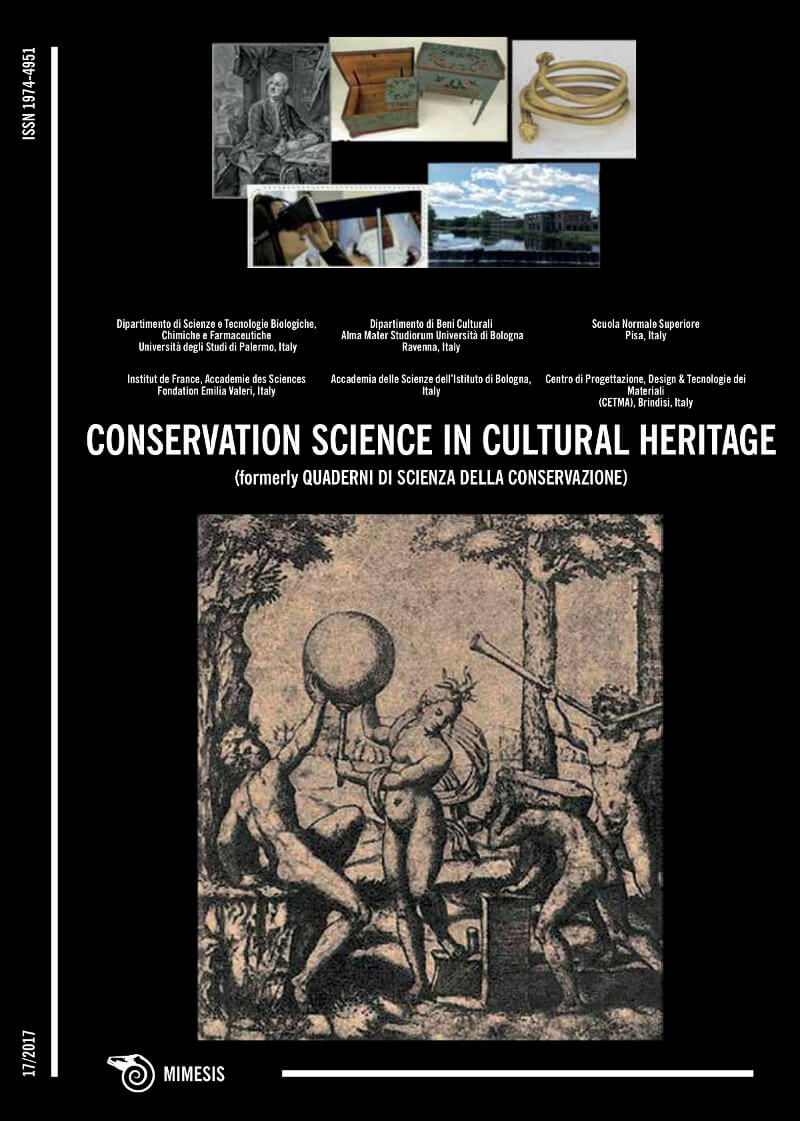Forensic Art History: the Ädel Painting Dispute 1839-1841
DOI:
https://doi.org/10.6092/issn.1973-9494/7941Keywords:
XRF, DSA-ToF-MS, Raman, FT-IR, folk art, pigmentAbstract
This article concerns a 19th century dispute about twenty pieces of decorated furniture painted by the 19th century painter Anders Erik Ädel (1809-1888) from Söderhamn, Hälsingland, Sweden. Ädel is considered to be one of the foremost painters in Hälsingland. His art works - painted furniture and interiors - are displayed in museums and can also be found in the Decorated Farmhouses of Hälsingland, UNESCO World Heritage. In 1839, Ädel accused his client, the farmer Erik Olofsson, in court of having paid too little for the objects he had painted as he had used more pigments than those for which he had been paid. Almost 180 years later scientific methods combined with historic source research were used to understand what pigments Ädel actually used. Through this study we demonstrate how multidisciplinary collaboration between sciences and humanities can contribute to deeper knowledge and new interpretations. The scientific analyses were preceded by analyses of the judicial protocols found. Non-invasive analyses using XRF instruments were conducted in situ, supplemented by other spectroscopic methods in the lab. The judicial protocols give an insight into what pigments Ädel had access to, and when combined with the scientific analyses, this information provides historic evidence of the artist's materials and painting technique.References
Nyström, I., Wilken, S., and Thomas, J. (2016). FT-Raman analyses of Blue dyes stuff common in Swedish folk art from Hälsingland during 18th and 19th century. Chemical Sciences Journal 7(2).
Tronner, K., Nord, A.G., von Arronet, D., and Mattsson, E. (2003). Nils Månsson Mandelgrens färgämnessamling: Dokumentation och analysresultat. Riksantikvarieämbetet 31. Stockholm, p.14.
Tronner, K., Nord, A.G., von Arronet, D., Mattsson, E., and Brandi, A. (2006). Undersökning av en unik färgprovsamling på Kungl. Konsthögskolan. Dokumentation, analys och sammanfattning. Rapport från Riksantikvarieämbetet 2006:1. Stockholm, p.28.
Post-och inrikestidningar 1832:19
Eastaugh, N. (2008). Pigment compendium: a dictionary and optical microscopy of historical pigments. Butterworth-Heinemann: Oxford, pp. 234, 247, 262, 269.
Karlsdotter Lyckman, K. (2005). Historiska oljefärger i arkitektur och restaurering. Diss. Stockholms universitet. Vara: Färgarkeologens förlag, pp. 70, 83.
Lyckman Gevert, K. (2016). Målarmästarens längtan. Byggnadskultur 1:16, pp. 12-17.
Downloads
Published
How to Cite
Issue
Section
License
Copyright (c) 2017 Ingalill Nyström, Jacob Thomas, Yvonne Fors, Liv Friis, Anders Assis, Kaj Thuresson
Copyrights and publishing rights of all the texts on this journal belong to the respective authors without restrictions. Authors grant the journal right of first publication.
This journal is licensed under a Creative Commons Attribution 4.0 International License (full legal code).
See also our Open Access Policy.






